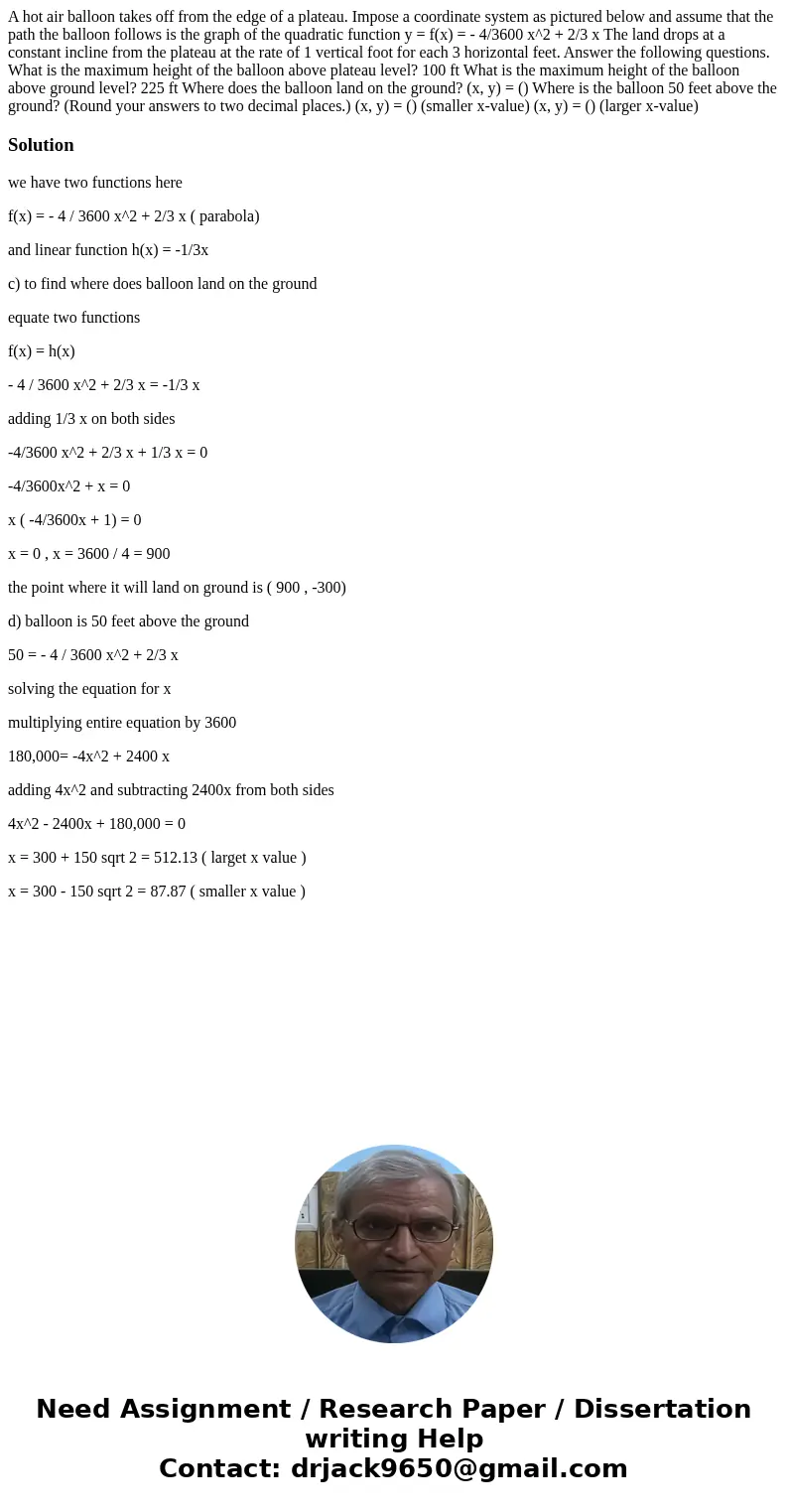A hot air balloon takes off from the edge of a plateau Impos
A hot air balloon takes off from the edge of a plateau. Impose a coordinate system as pictured below and assume that the path the balloon follows is the graph of the quadratic function y = f(x) = - 4/3600 x^2 + 2/3 x The land drops at a constant incline from the plateau at the rate of 1 vertical foot for each 3 horizontal feet. Answer the following questions. What is the maximum height of the balloon above plateau level? 100 ft What is the maximum height of the balloon above ground level? 225 ft Where does the balloon land on the ground? (x, y) = () Where is the balloon 50 feet above the ground? (Round your answers to two decimal places.) (x, y) = () (smaller x-value) (x, y) = () (larger x-value)
Solution
we have two functions here
f(x) = - 4 / 3600 x^2 + 2/3 x ( parabola)
and linear function h(x) = -1/3x
c) to find where does balloon land on the ground
equate two functions
f(x) = h(x)
- 4 / 3600 x^2 + 2/3 x = -1/3 x
adding 1/3 x on both sides
-4/3600 x^2 + 2/3 x + 1/3 x = 0
-4/3600x^2 + x = 0
x ( -4/3600x + 1) = 0
x = 0 , x = 3600 / 4 = 900
the point where it will land on ground is ( 900 , -300)
d) balloon is 50 feet above the ground
50 = - 4 / 3600 x^2 + 2/3 x
solving the equation for x
multiplying entire equation by 3600
180,000= -4x^2 + 2400 x
adding 4x^2 and subtracting 2400x from both sides
4x^2 - 2400x + 180,000 = 0
x = 300 + 150 sqrt 2 = 512.13 ( larget x value )
x = 300 - 150 sqrt 2 = 87.87 ( smaller x value )

 Homework Sourse
Homework Sourse